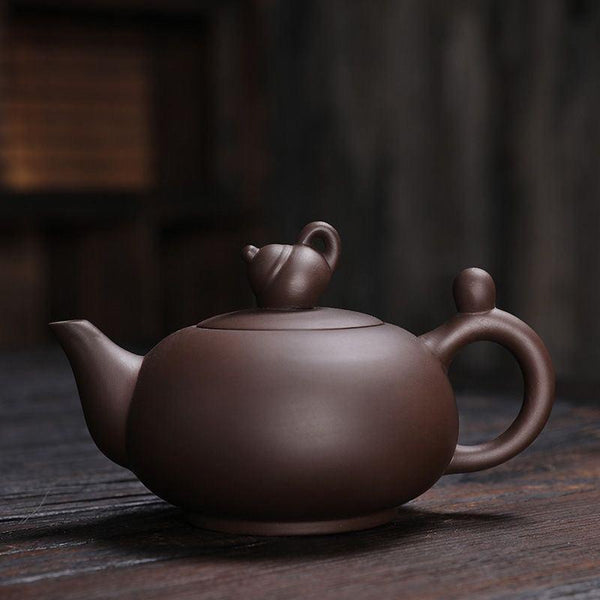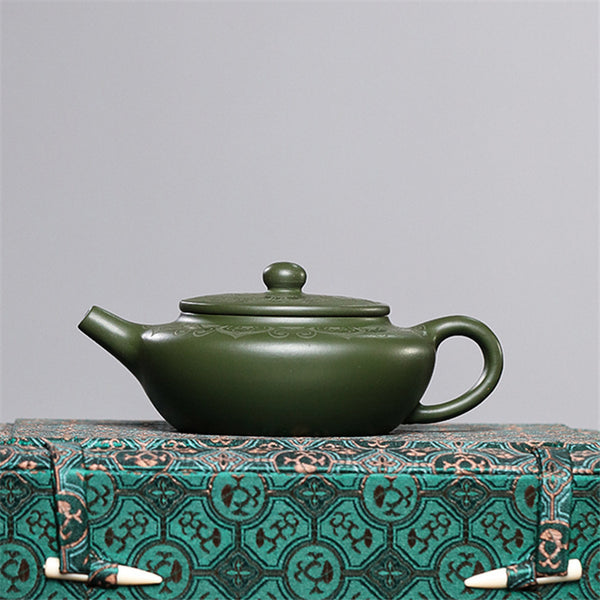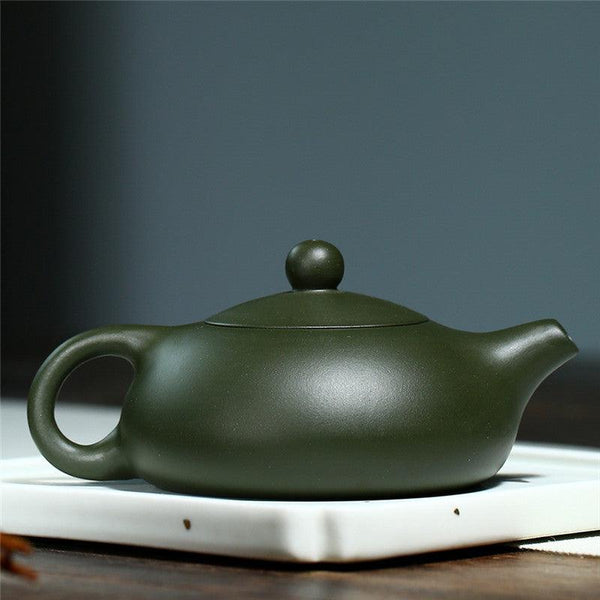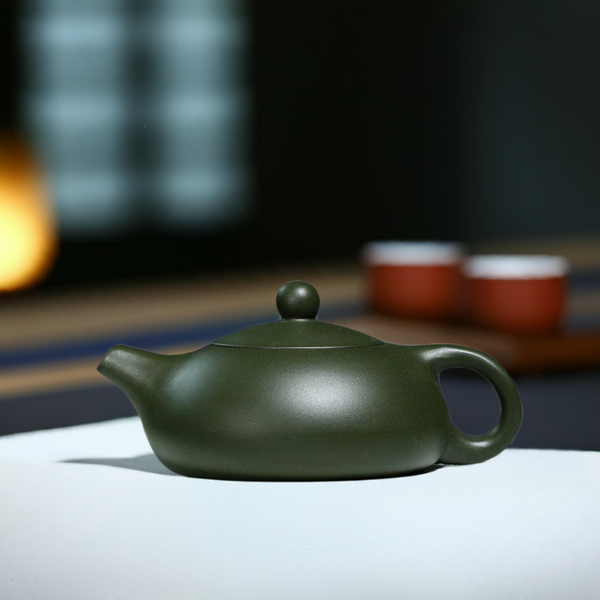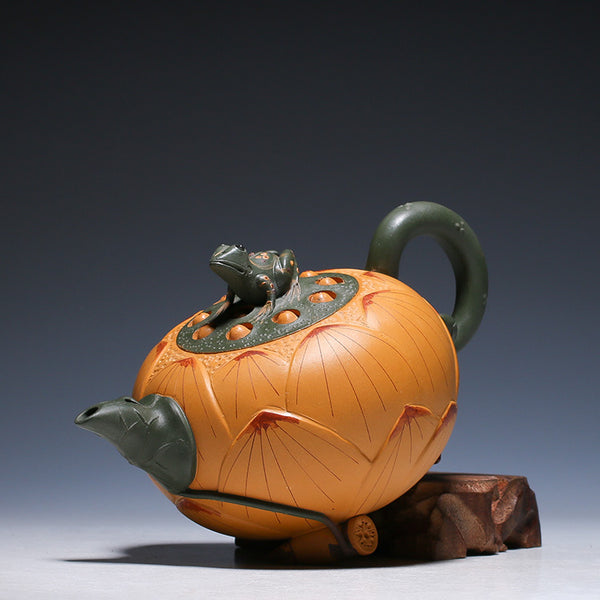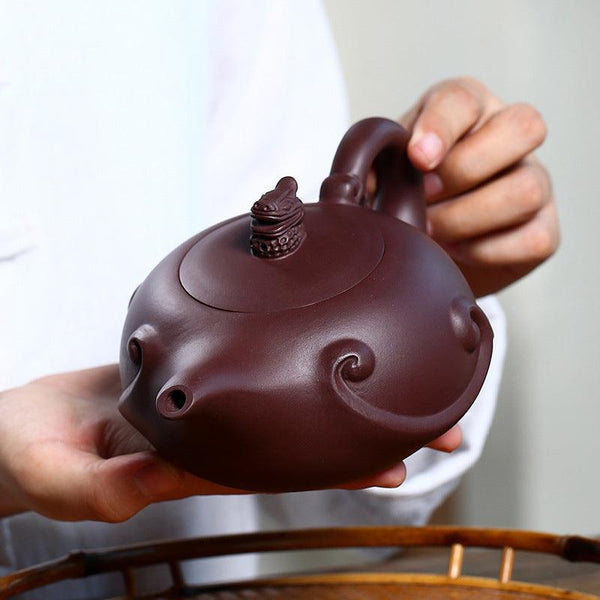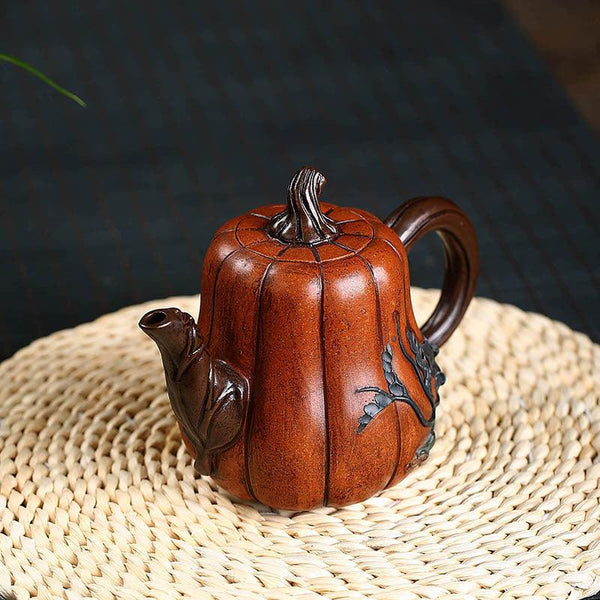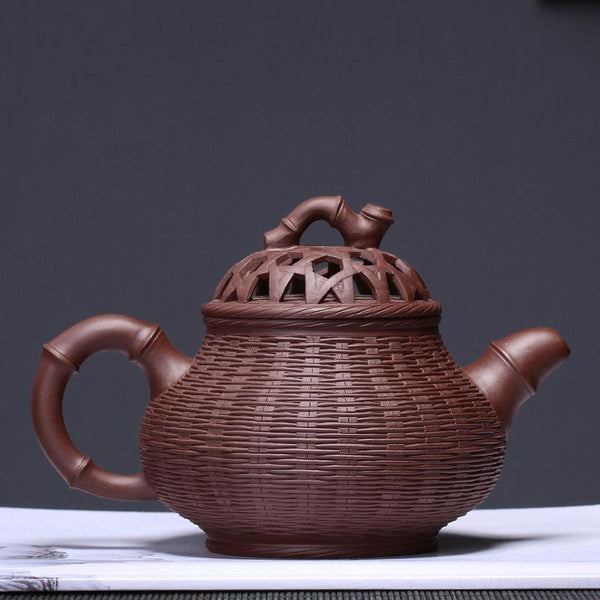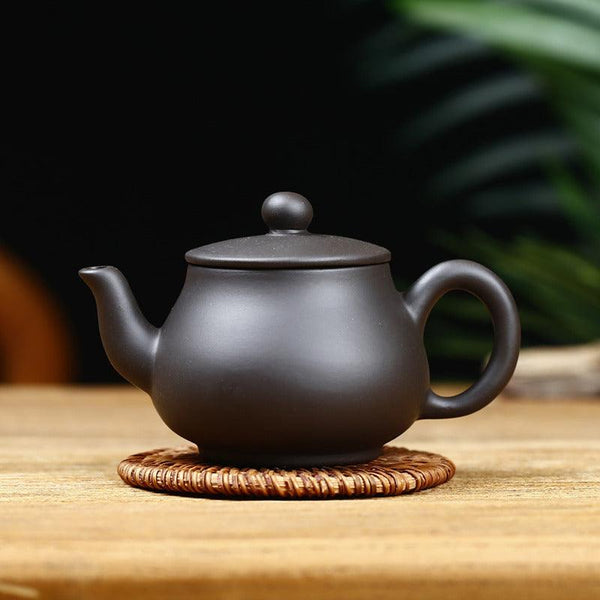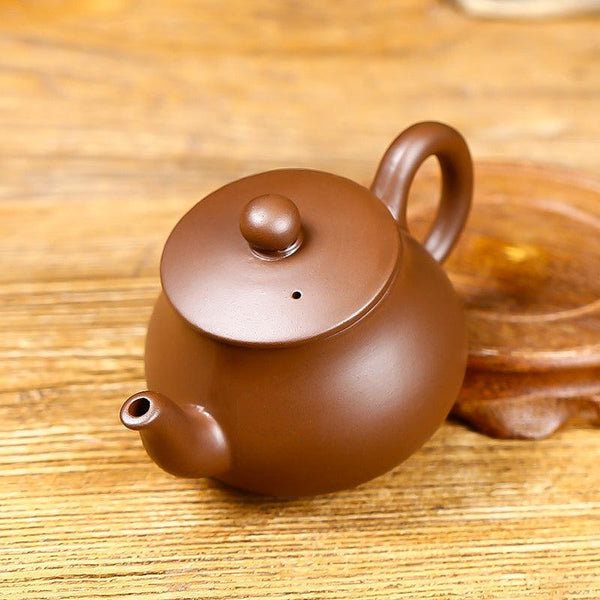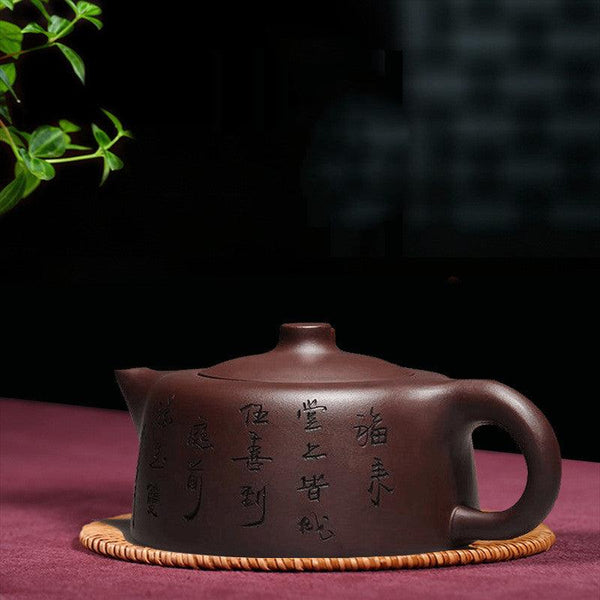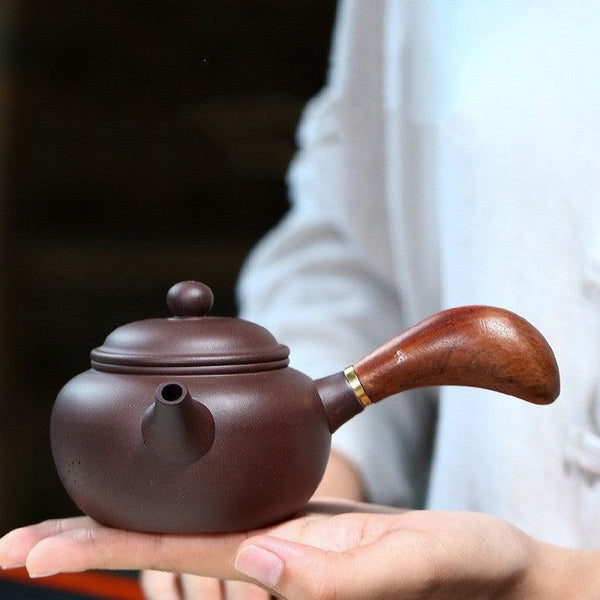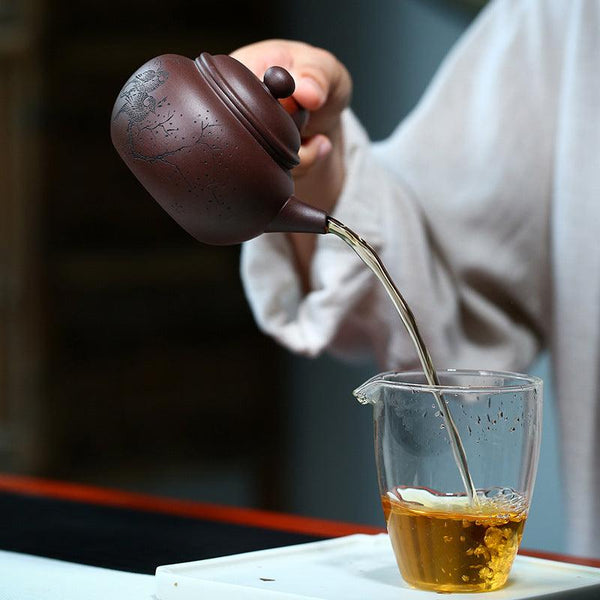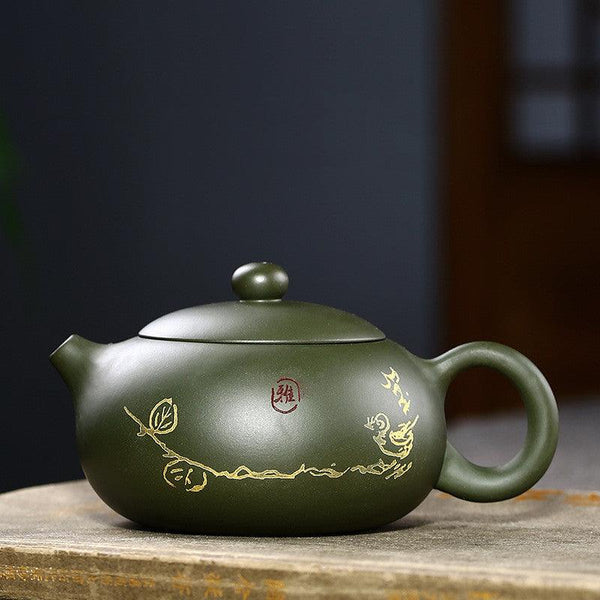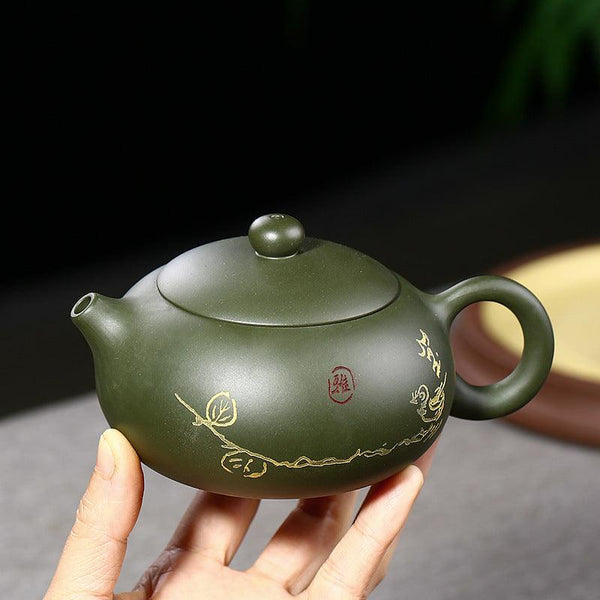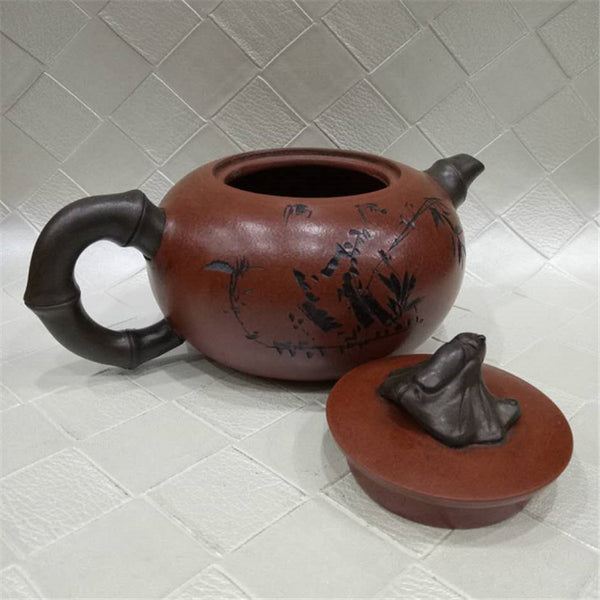Zisha teapots are revered worldwide for their beauty, functionality, and heritage, but the true magic behind these teapots lies in their material—Zisha clay. Known as the “Five-Color Earth,” Zisha clay brings unique characteristics that elevate the tea experience and showcases a profound blend of artistry and nature.
What is Zisha Clay?
Originating in the Dingshu town of Yixing, Jiangsu Province, Zisha clay isn’t just ordinary clay. It's a mineral-rich raw material, formed over long geological ages and under complex natural processes. This special clay lends Zisha teapots their unique qualities, colors, and textures, making each teapot as distinct as a fingerprint.
Types of Zisha Clay and Their Unique Properties
Zisha clay comes in various types, each with different colors and tea-brewing qualities. The main types include Purple Clay, Red Clay, and Duan Clay, each bringing out unique characteristics in teas.
1. Purple Clay (Zi Ni)
Purple clay is the most widely used type of Zisha clay, known for its deep, earthy hues and rich texture. When fired, it results in a thick, porous surface, allowing excellent breathability. This clay is ideal for brewing stronger teas like Pu-erh and black teas, enriching the flavor and creating a mellow tea-drinking experience.
2. Red Clay (Zhu Ni)
Known for its vibrant red color, red clay is high in crystallinity and produces smaller, more refined teapots. This clay is often used for highly fragrant teas, like Tie Guan Yin, because it enhances the tea’s aroma while highlighting its flavors. Red clay teapots are cherished for their elegant look and their role in enhancing aromatic teas.
3. Duan Clay
Duan clay features a diverse color range from yellow to green and even white. Its soft, fresh texture and excellent breathability make it a perfect match for lighter teas like green tea and white tea. Duan clay teapots help preserve the tea’s natural taste, delivering a clean, bright tea color and a refreshing flavor.
The Unique Dual-Pore Structure of Zisha Clay
One of the magical aspects of Zisha clay is its dual-pore structure. This feature gives Zisha teapots their excellent breathability and absorbency. When tea is brewed repeatedly in a Zisha teapot, the pot absorbs some of the tea’s essence, developing a beautiful patina over time. This natural layer enriches the flavor of future brews and gives each teapot a warm, unique appearance, creating a teapot that is as much a piece of art as it is a functional object.
Mineral Content: A Hidden Health Benefit
Zisha clay is rich in minerals and trace elements like iron, silicon, and aluminum. During tea brewing, these minerals are slowly released into the tea, enhancing its flavor profile and providing subtle health benefits. Iron, for example, is known to support blood circulation and boost immunity, adding another dimension of wellness to each cup of tea brewed in a Zisha teapot.
High Plasticity and Artistry of Zisha Clay
Zisha clay’s plasticity makes it a versatile material for artisans. Its malleable quality allows potters to shape it into various teapot styles, from traditional designs to innovative, modern forms. This high level of craftsmanship has led to teapots that are visually striking, intricate, and highly functional, each piece reflecting the skill, creativity, and passion of the artisan behind it.
Crafting a Zisha Teapot: The Role of the Artisan
Creating a Zisha teapot requires a deep understanding of the clay’s properties. Artisans use handcrafting techniques honed over generations, from molding the shape to carefully controlling the firing temperature, to achieve a teapot that is both visually appealing and optimized for tea brewing. The diversity in shape, design, and ornamentation reflects not only the artist’s skill but also the teapot’s role as a bridge between functionality and cultural expression.
How Zisha Clay Enhances the Tea-Drinking Experience
Thanks to its porous structure, Zisha clay absorbs the flavors of each tea brewed within it. Over time, the pot gains a subtle, complex aroma of its own. Many tea connoisseurs find that a well-aged Zisha teapot, one that has brewed many teas, brings an irreplaceable depth to each new pot of tea, making the drinking experience richer and more enjoyable.
A Living Legacy: Preserving and Appreciating Zisha Clay
Zisha clay has a timeless appeal that continues to captivate people around the world. Despite social and technological changes, the tradition of Zisha teapot making remains steadfast. Modern artisans embrace contemporary aesthetics while preserving time-honored techniques, ensuring that each Zisha teapot carries forward the legacy of Yixing craftsmanship.
Conclusion
Zisha clay’s unique properties—its variety, porous structure, mineral richness, and high plasticity—have elevated Zisha teapots from simple tea vessels to cherished artifacts. Whether enjoyed for their aesthetic appeal, cultural significance, or contribution to a flavorful tea experience, these teapots embody the union of nature, tradition, and art. Understanding Zisha clay helps us appreciate not just the teapots themselves but also the centuries-old heritage of Chinese tea culture they represent.


